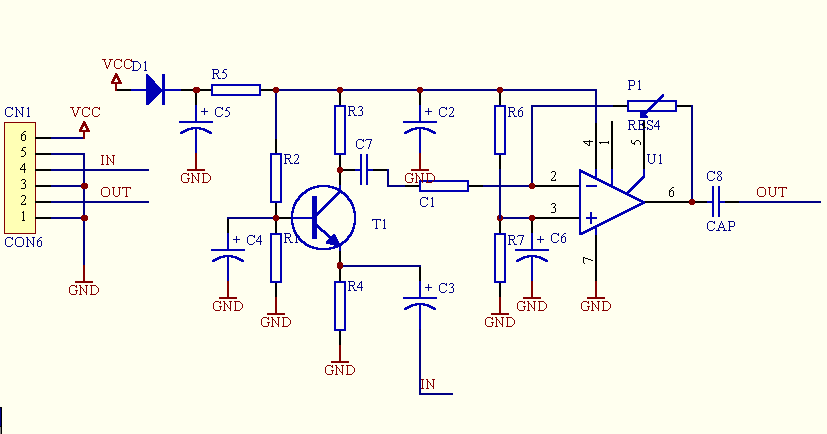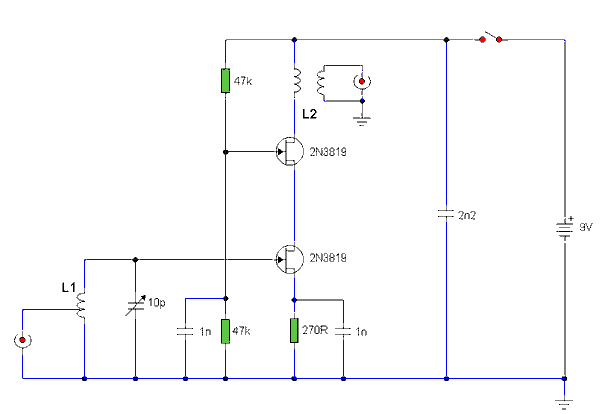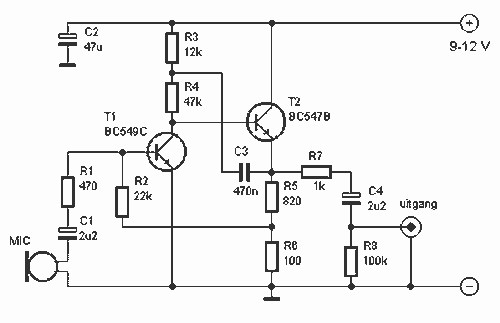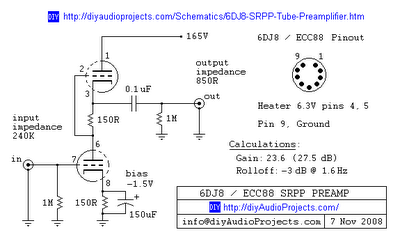
Microphone Preamplifier with SSM 2015 P
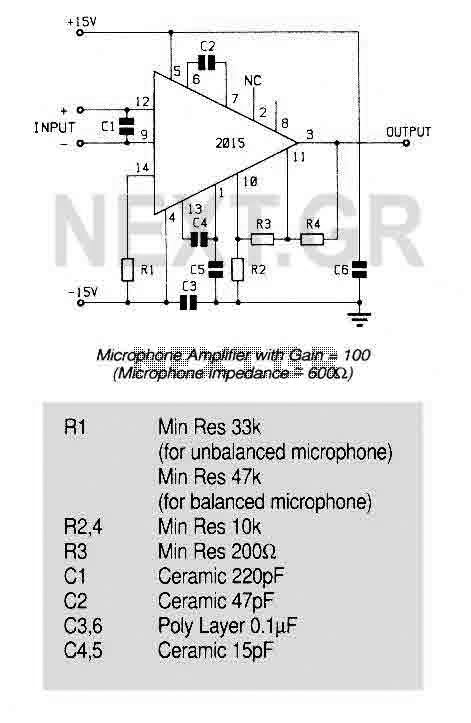
An ultra low noise audio preamplifier particularly suited to microphone preamplification including balanced microphones. The IC features wide bandwidth, low distortion only 0.007% at a gain of 100, and very low noise only 1.3nV/Hz for source impedance up to 4k ohm.
The ultra-low noise audio preamplifier is designed to enhance audio signals captured from microphones, particularly balanced types, which are commonly used in professional audio applications. This preamplifier integrates an operational amplifier (op-amp) configured for high gain and low noise characteristics, making it ideal for sensitive audio applications.
The device operates with a wide bandwidth, allowing it to faithfully reproduce audio signals across a broad frequency range. This is crucial for maintaining audio fidelity, especially in professional recording environments. The low distortion rating of 0.007% at a gain of 100 ensures that the audio output remains clean and true to the original sound source, minimizing any alteration introduced by the amplification process.
Noise performance is a critical parameter for audio preamplifiers. With a noise figure of only 1.3nV/√Hz for source impedances up to 4k ohms, this preamplifier excels in providing a clear signal without introducing significant background noise. This is particularly important in applications where subtle audio details must be preserved, such as in studio recordings or high-fidelity sound systems.
The circuit design typically includes input and output coupling capacitors to block DC voltage while allowing AC audio signals to pass. This ensures that the preamplifier does not affect the DC biasing of the microphone or subsequent stages in the audio chain. Additionally, the balanced input configuration helps to reject common-mode noise, further enhancing the signal integrity.
Power supply requirements for the preamplifier are also critical. The device may operate from a dual power supply, which is common in audio applications, allowing for symmetric operation and improved linearity. Proper decoupling capacitors should be placed near the power supply pins to minimize power supply noise and ensure stable operation.
Overall, this ultra-low noise audio preamplifier is a sophisticated solution for high-quality microphone preamplification, ensuring that audio signals are captured with exceptional clarity and minimal distortion, making it suitable for a wide range of professional audio applications.An ultra low noise audio preamplifier particularly suited to microphone preamplification including balanced microphones. The IC features wide bandwidth, low distortion only 0.007% at a gain of 100, and very low noise only 1.3nV/Hz for source impedance s up to 4kohm.
The ultra-low noise audio preamplifier is designed to enhance audio signals captured from microphones, particularly balanced types, which are commonly used in professional audio applications. This preamplifier integrates an operational amplifier (op-amp) configured for high gain and low noise characteristics, making it ideal for sensitive audio applications.
The device operates with a wide bandwidth, allowing it to faithfully reproduce audio signals across a broad frequency range. This is crucial for maintaining audio fidelity, especially in professional recording environments. The low distortion rating of 0.007% at a gain of 100 ensures that the audio output remains clean and true to the original sound source, minimizing any alteration introduced by the amplification process.
Noise performance is a critical parameter for audio preamplifiers. With a noise figure of only 1.3nV/√Hz for source impedances up to 4k ohms, this preamplifier excels in providing a clear signal without introducing significant background noise. This is particularly important in applications where subtle audio details must be preserved, such as in studio recordings or high-fidelity sound systems.
The circuit design typically includes input and output coupling capacitors to block DC voltage while allowing AC audio signals to pass. This ensures that the preamplifier does not affect the DC biasing of the microphone or subsequent stages in the audio chain. Additionally, the balanced input configuration helps to reject common-mode noise, further enhancing the signal integrity.
Power supply requirements for the preamplifier are also critical. The device may operate from a dual power supply, which is common in audio applications, allowing for symmetric operation and improved linearity. Proper decoupling capacitors should be placed near the power supply pins to minimize power supply noise and ensure stable operation.
Overall, this ultra-low noise audio preamplifier is a sophisticated solution for high-quality microphone preamplification, ensuring that audio signals are captured with exceptional clarity and minimal distortion, making it suitable for a wide range of professional audio applications.An ultra low noise audio preamplifier particularly suited to microphone preamplification including balanced microphones. The IC features wide bandwidth, low distortion only 0.007% at a gain of 100, and very low noise only 1.3nV/Hz for source impedance s up to 4kohm.


